
Fit — Within The Organization’s Context
Let’s talk about the first major area to consider when contemplating a decision on whether or not to switch work management solutions, which is about evaluating the overall fit of both the current and alternate platform’s capabilities within the context of your organization’s needs.
What Are We Trying to Achieve?
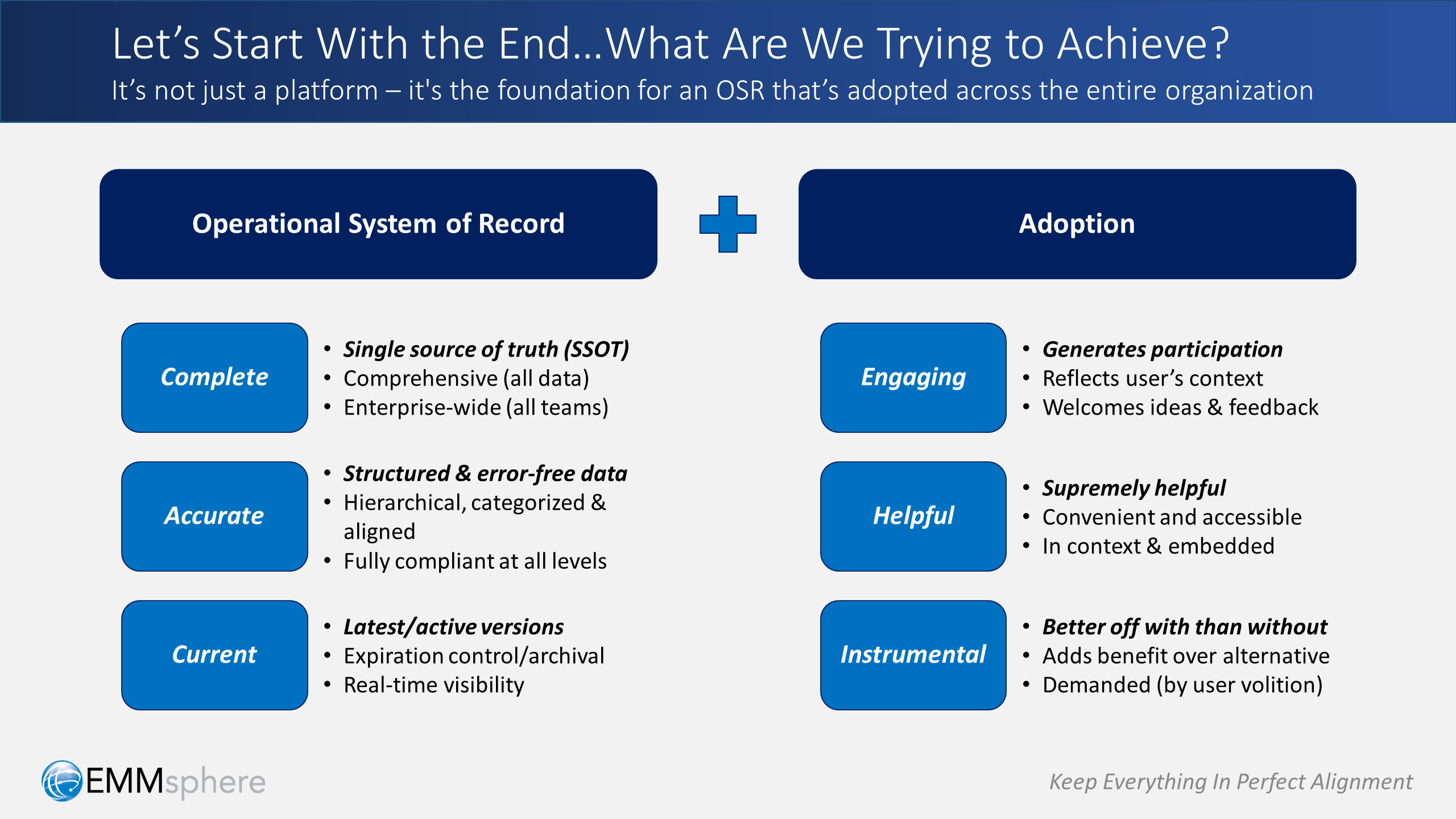
Now, when think about the organization’s needs, it helps to think broadly and long-term. So let’s ask ourselves honestly and openly: what are we really trying to achieve as we consider work management platforms?
Well, we think there are two things.
First, it’s not just a platform — it’s the foundation for an operational system of record (OSR) for the entire enterprise. That means it must be:
- Complete: the single source of truth for all marketing information across all teams
- Accurate: error-free with full conformity to brand and compliance standards
- Current: a one-stop-shop for the most up-to-date marketing content
Second, this operational system of record must be enthusiastically adopted across the entire organization, which means it has to be:
- Engaging: it should generate willing participation from end-users
- Helpful: it needs to be convenient and embedded within each user’s daily activities
- Instrumental: or insanely helpful — users feel they’re much better off with it than without it
Consider the Broader Landscape
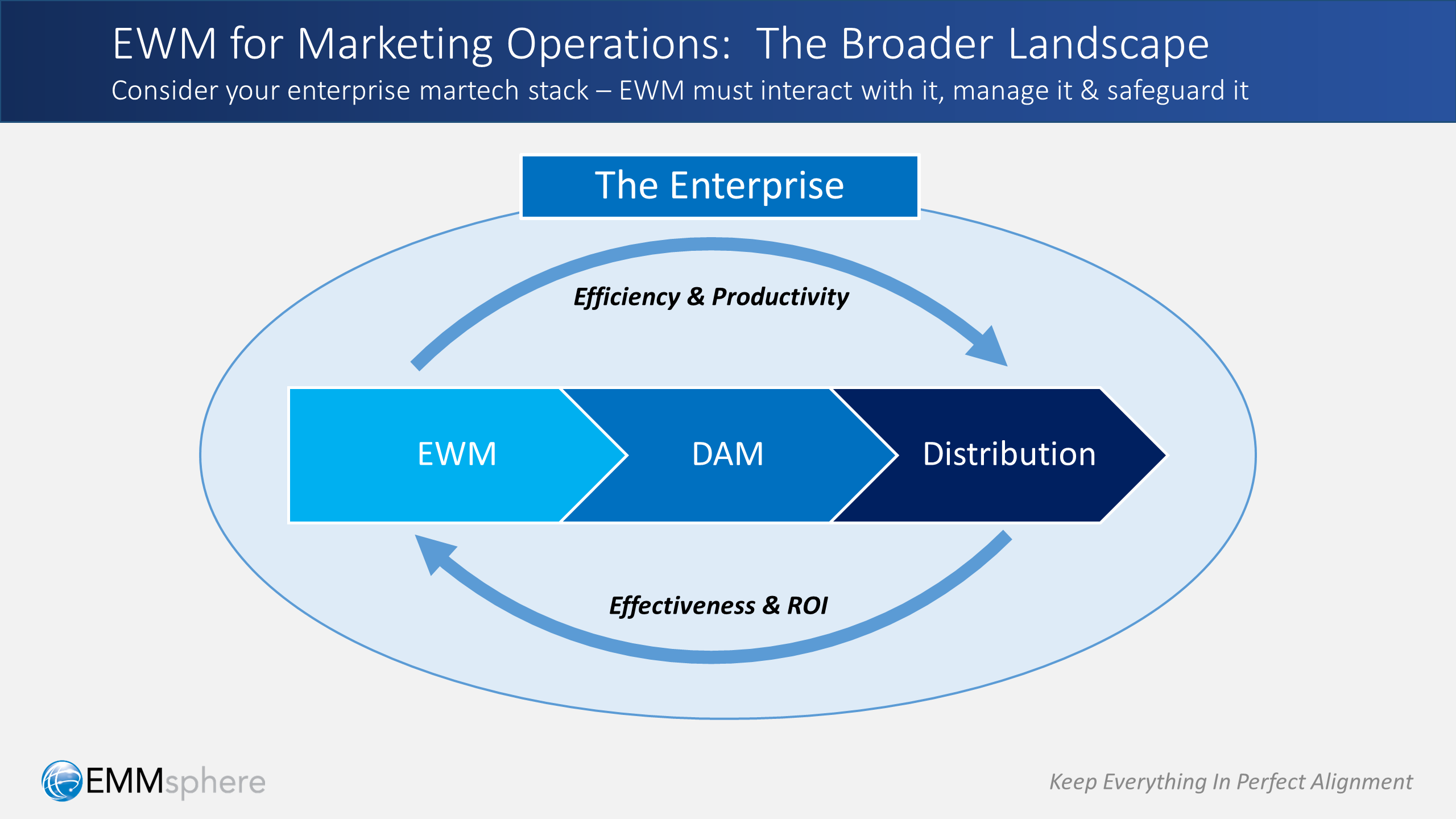
Another overall consideration to take into account regarding platform fit is the broader landscape that the platform needs to fit into, namely the organization’s existing martech stack.
The key point being: the work management platform needs to interact with it, and help to orchestrate the flow of information across the entire stack.
This is particularly important for the interaction between work management and DAM, which should fit together as a seamlessly integrated and mutually complementary whole.
Also, especially in the long-term, it should facilitate the distribution of content through multiple channels to dozens of experience touch-points.
Define High-Level Objectives
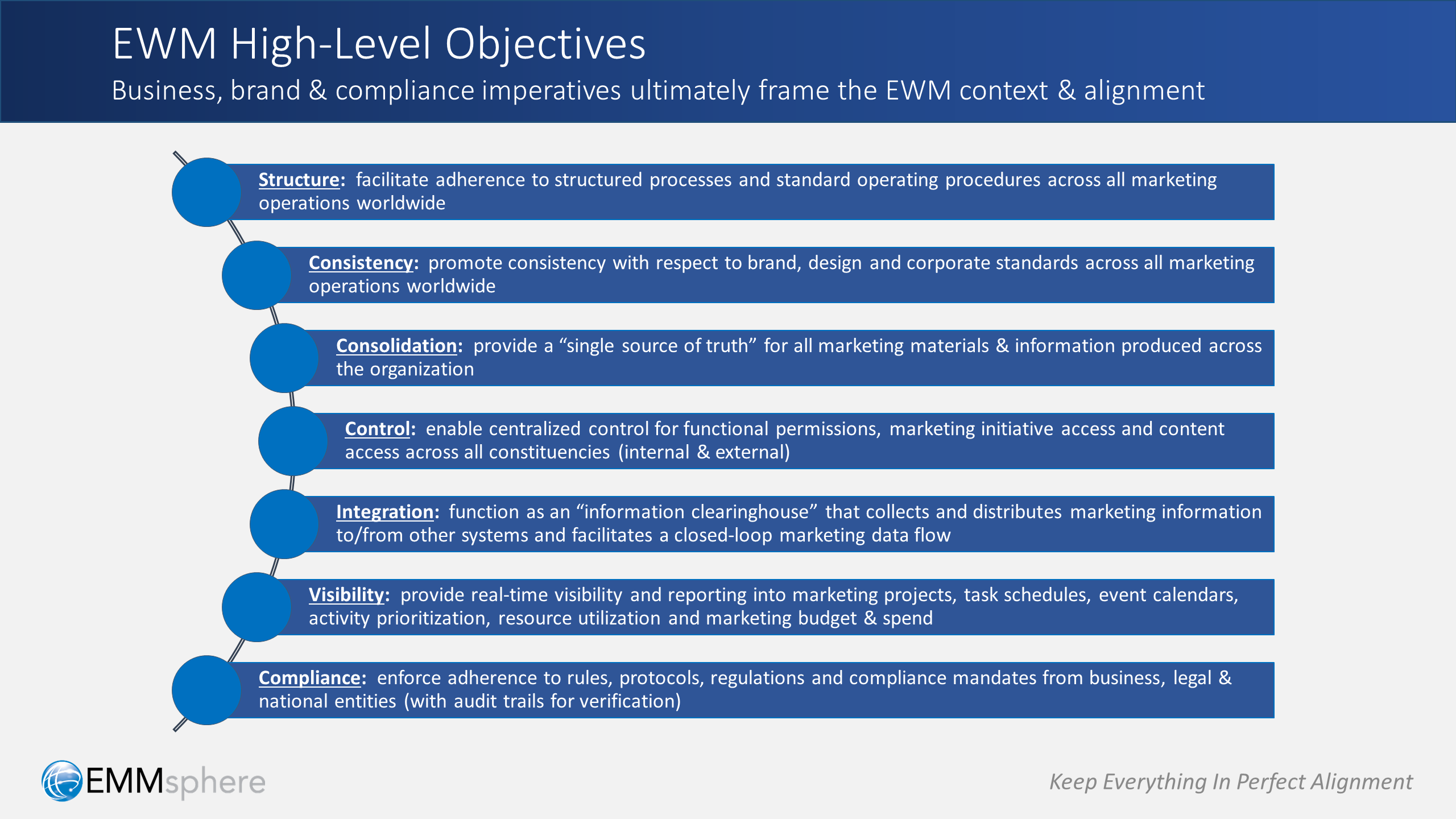
Now, as a very first step to evaluating platform fit, we always encourage clients to be very clear on their objectives, and make sure these are thoroughly vetted, with consensus and buy-in across all constituencies.
In our experience, large organizations typically define seven categories of objectives, namely:
- Structure
- Consistency
- Consolidation
- Control
- Integration
- Visibility
- Compliance
In fact, in more tightly regulated industries such as financial services and life sciences, the business, brand and compliance-related imperatives typically dominate the list, and can be make-or-break requirements to which any solution must adhere.
But in all cases, it’s important to spell these objectives out up-front, because everything else regarding the platform should align to them.
And, truth be told, defining objectives up-front always ensures a more relevant and compelling platform decision in the end.
Finding the Right Balance

However, as you consider the needs and objectives of your various stakeholders and constituencies, you will soon realize that you’re actually facing an inherent conflict, which is this:
In fact, it’s that notion of structure vs. flexibility that really sets many platforms apart from one another, in terms of how they’re architected, the problems they solve, and the functional capabilities they offer.
So, it’s important to understand which constituency we’re trying to serve, and what their imperatives are. For example:
- Organizations want to drive efficiency & ROI, while teams are looking for ways to facilitate collaboration and personal productivity
- Organizations will be looking to satisfy technology, business & compliance mandates, while teams are looking to satisfy the needs of marketers, creatives and collaborative groups
- Organizations are more about centralized control and typically sponsored by IT, while teams follow a more decentralized approach, and are typically sponsored by marketing departments.
But even though there’s an inherent conflict of interest here, we believe it’s actually a great opportunity for companies to embrace platforms that offer a winning balance.
In fact, we would even go a step further:
Platform Differentiators
So how can we find platforms that fit that balance?
Well, here at EMMsphere we’ve developed an assessment criteria that covers over 520 platform capabilities, grouped into 3 areas.
Now, we certainly don’t want to overwhelm you with an enormously detailed list of 520+ line items printed right here in microscopic font!
So instead, let’s focus on some of the key areas of differentiation that typically set platforms apart in terms of striking that optimal balance mentioned earlier.
Structural/Organizational Differentiators
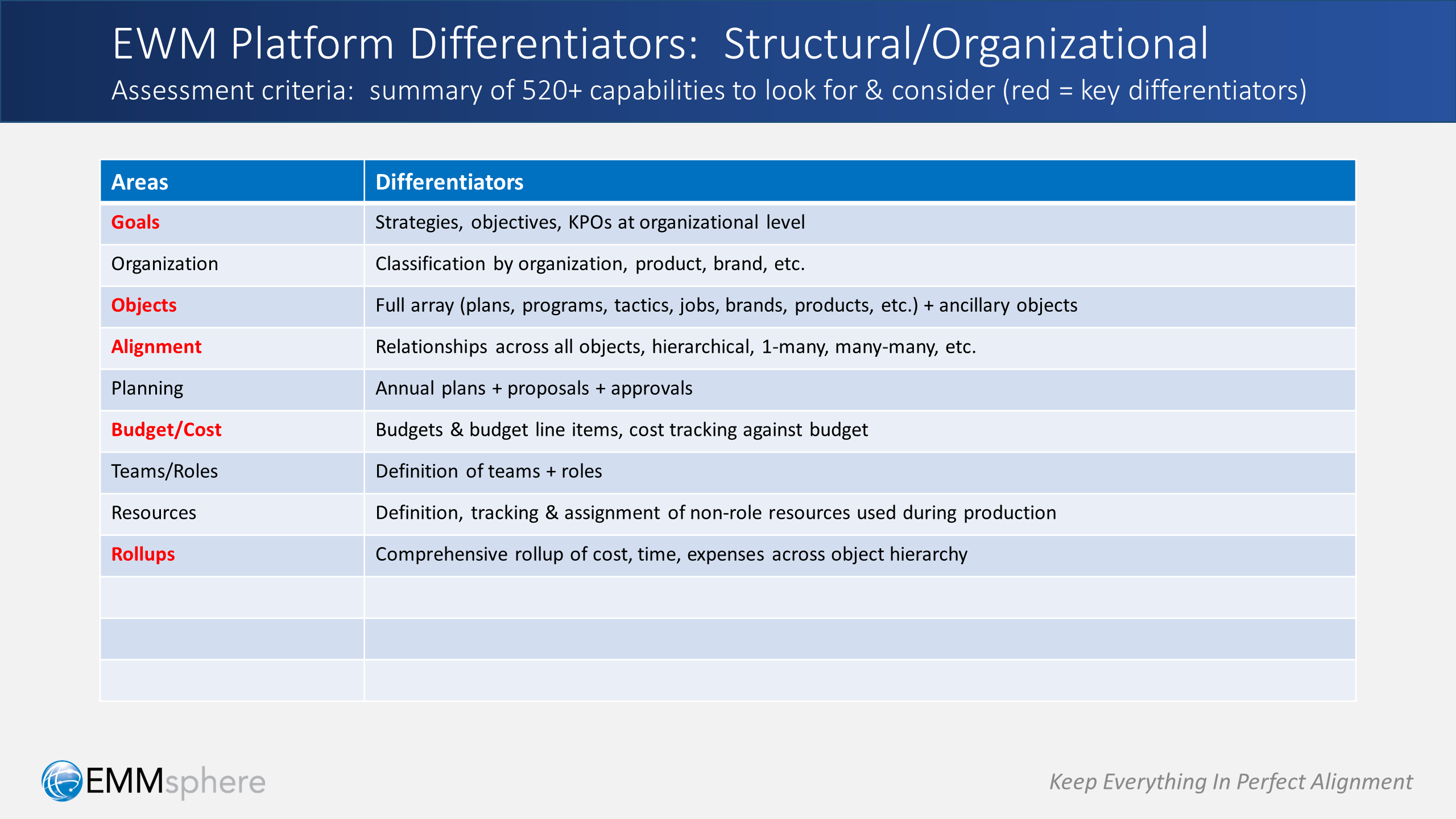
For example, with respect to the structural & organizational aspects of work management, some differentiating capabilities to look for are:
- The object model itself, meaning the full array of marketing-related entities that are included out of the box
- Alignment and rollup of information across those objects
- Budgeting & cost-management capabilities, and how closely those align to your own budgeting procedures.
Project Management Differentiators
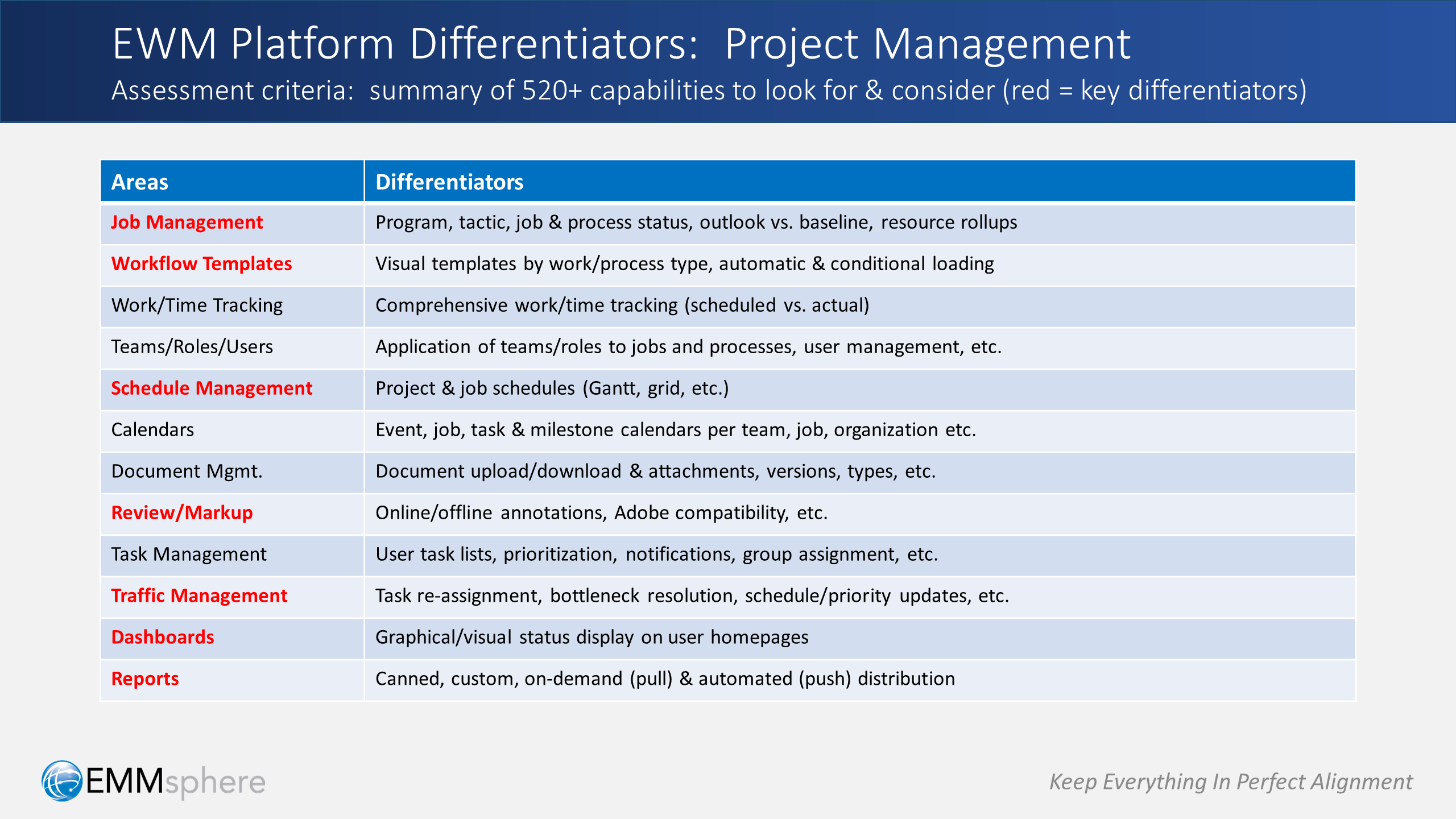
The second area of platform differentiators covers to the project management aspects of work management platforms, which as you can imagine, are critically important in marketing organizations.
Some of the differentiators to look for here include:
- Job management capabilities that are rich and sophisticated
- Workflow templates, schedule management & traffic management features
- Online review & markup that delivers an intuitive presentation and ease of use
- Reports and dashboards that can be easily personalized and automatically distributed
Configuration & Administration Differentiators
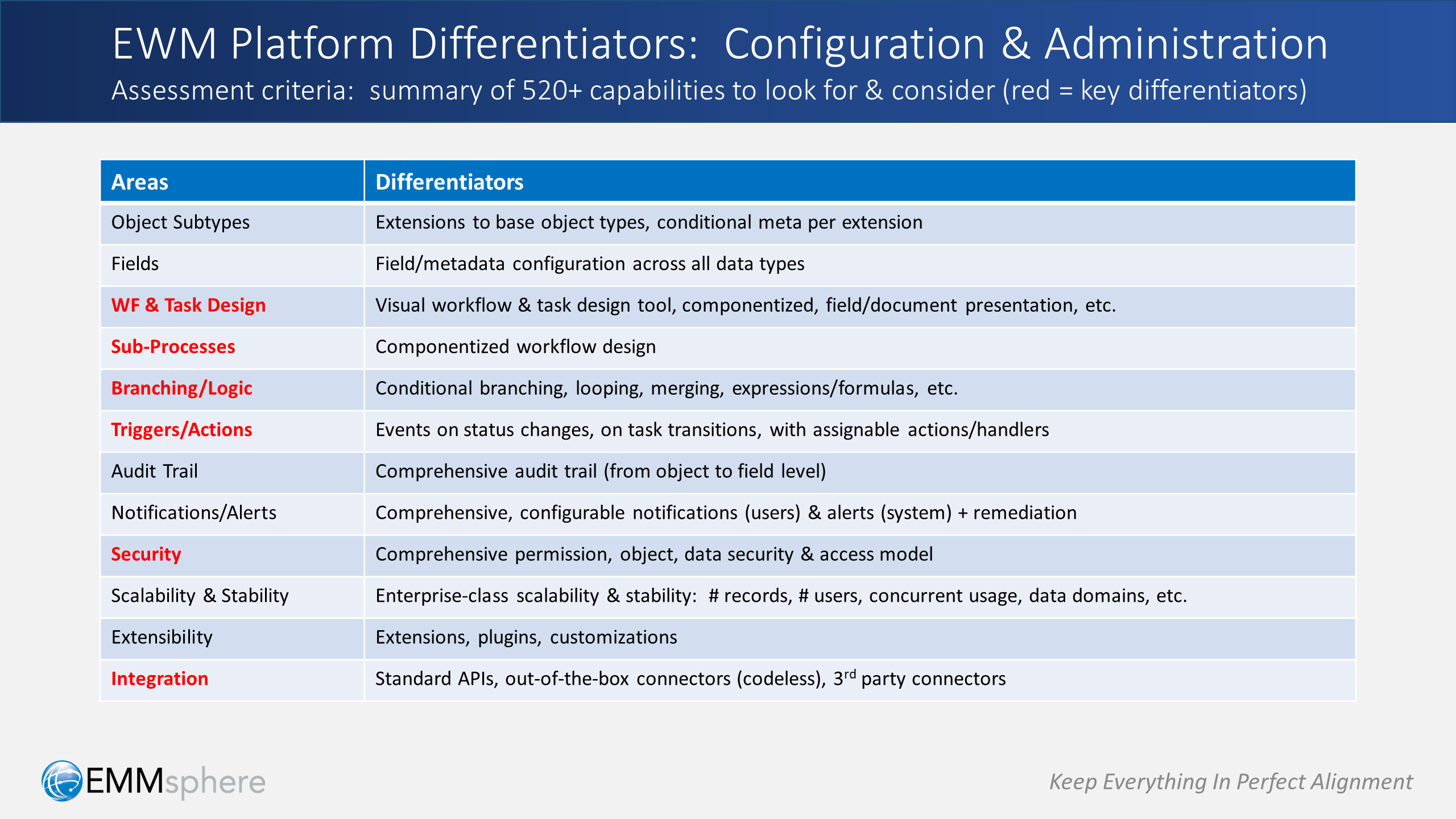
The third, and probably the most important area of our assessment criteria, relates to the configuration & administration capabilities — meaning, the capabilities that ultimately enable the platform to come alive and become a solution that truly reflects your organization’s needs.
Here, you’ll want to pay close attention to:
- Workflow & task design, including conditional branching, sub-processes, and triggers & actions
- The security model in terms of permissions and access levels, and how those are managed across users and groups
- Integration capabilities, because as we mentioned before, work management needs to coexist seamlessly with all of the other components in your martech stack
Choosing Alternative Candidates

So far, we’ve discussed various considerations on how to assess platform fit, and we’ve recommended finding platforms that offer a winning balance of capabilities that match your organization’s and team’s needs. Those are all great ways of narrowing down the field of platforms to those that may be best suited to your needs.
However, there’s one more way to find out which platforms offer a nice balance: check out all of the great research out there!
Without doubt, you should definitely take analyst reports to heart. They’re usually very insightful and will certainly point out trends you may not have considered.
But, don’t stop there!
In the end, nobody knows your organization as well as you. And, you should always ask the platforms to show you how a day-in-the-life will look — in your specific context, with your specific use cases — in an open and collaborative discovery process.
This way — by carefully considering the fit — you’ll be sure to land on platforms that are just right for your particular organization.
Next Steps
We’ve hardly scratched the surface — so much goes into a carefully considered platform decision! Don’t worry, we’ve got you covered. And, as a next step, we invite you to check out some of our other posts:
- Platform Decisions: When & How to Build a Case
- Platform Decisions: Evaluating Fit
- Platform Decisions: Assessing Viability
- Platform Decisions: Estimating Impact
- Platform Decisions: Testing Assumptions
- Platform Decisions: Differentiators & Productivity Levers
- Platform Decisions: Thoughts About Change
- Platform Decisions: Getting All The Juice
Leave a Reply